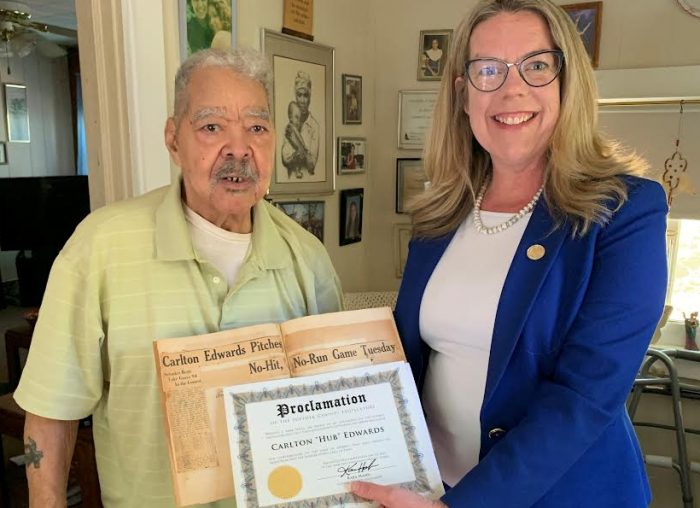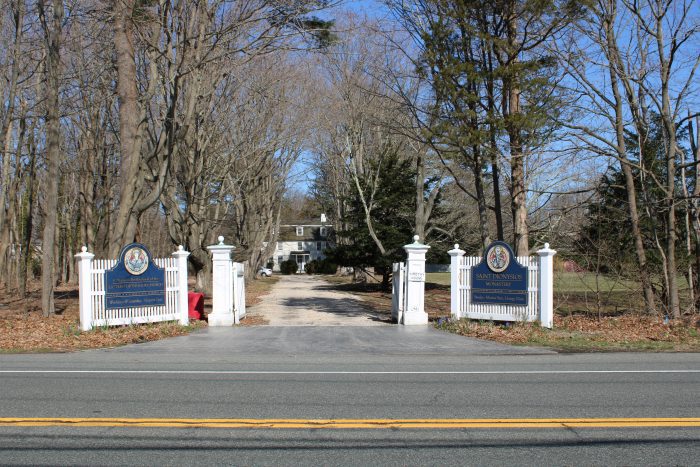A cloud of mystery hangs over Stony Brook University and Suffolk County municipalities as Gov. Kathy Hochul (D) contemplates whether to house asylum seekers at state university campuses.
Spectrum News NY1 reported last week the governor was exploring housing asylum seekers entering the state across three SUNY campuses, including SBU. The governor’s office has yet to clarify its plans as of press time.
New York State Assemblywoman Jodi Giglio (R-Riverhead) said she has been in contact with the governor’s office. According to Giglio’s contact there, Marissa Espinoza, the proposal to house asylum seekers at SBU “is not happening.”

“I’m hoping that that’s not the plan because we really need those dorms for students,” Giglio said. “The taxpayers just can’t afford to take care of more people. We can barely afford to take care of our veterans and homeless.”
In the face of uncertainty and preparing for the prospect of new migrants, Town of Brookhaven Supervisor Ed Romaine (R) also expressed apprehensions about the proposed plans.
Though acknowledging the town does not have jurisdiction over state property, the Brookhaven supervisor referred to potential movements of asylum seekers into SBU as “probably a mistake.”
“I’m concerned about the impact on the school district,” Romaine told TBR News Media in an exclusive interview. “Twenty to 30 years ago, you had single men coming up here and sending money back home. Now, they’re coming up as a family.”
He added, “I’m concerned about the impact that would have on the Three Village school district which, to my understanding, is laying off teachers this school year.”
Ivan Larios, manager of organizing and strategy for the Long Island branch of the New York Immigration Coalition, has been among a vocal group of immigration proponents advocating that Suffolk County welcomes asylum seekers. [See story, “Republican lawmakers, immigration advocates clash over asylum seekers,” May 25, TBR News Media.]
In a phone interview, he outlined the reasons for considering asylum requests, appealing to policymakers on humanitarian grounds.
“People are coming here because they’re running away from persecution, political unrest and violence,” he said. “Immigrants are already a part of our community, and they make Long Island richer and better.”
Giglio contended that Suffolk County is ill-prepared for the challenges of providing services to asylum seekers.
“We have people that are living in the woods in encampments across the street from our parks,” the assemblywoman said. “Our hospitals are not ready for it, the need for services that we can’t provide. We can barely take care of the homeless people we have now.”
Romaine, who is running for Suffolk County executive in November’s election, when asked whether the county is prepared for an influx of new migrants, said “no.”
“I sympathize with asylum seekers,” Romaine said, “But I am concerned about migrants coming to this country without adequate preparation, and I don’t believe we have adequate preparation.”
Larios suggested arguments advanced against asylum seekers can be deceptive. He maintained that asylum seekers are not diverting public resources and attention from already-vulnerable communities across the state.“We believe elected officials should be working in finding solutions instead of saying, ‘No, we can’t take more people.’”
— Ivan Larios
“There are rumors that asylum seekers have displaced veterans or homeless people in other localities around the state, but these are lies,” the immigration advocate said. “These are lies that have been perpetrated to create division.”
But, he added, “There are issues taking place with, for example, housing, but … we believe elected officials should be working in finding solutions instead of saying, ‘No, we can’t take more people.’”
Meanwhile, County Executive Steve Bellone (D) issued an emergency order, May 26, regarding the continuing asylum-seeker crisis. In a press release he said, “Today, I issued an emergency order as New York City continues to grapple with a shortage of available housing options for families and individuals fleeing desperate circumstances and legally seeking asylum. We remain supportive of Governor Hochul’s coordinated and humane approach to addressing this crisis and this emergency order serves to protect the local communities from bearing any costs associated with the potential arrival of asylum seekers.”
The emergency order repeats the county’s calls “for a coordinated approach in which New York State will serve as the lead agency, working to identify potential federal and state sites to temporarily house asylum seekers,” the release added.
















